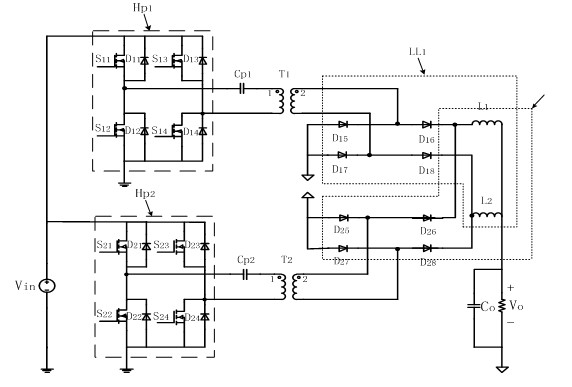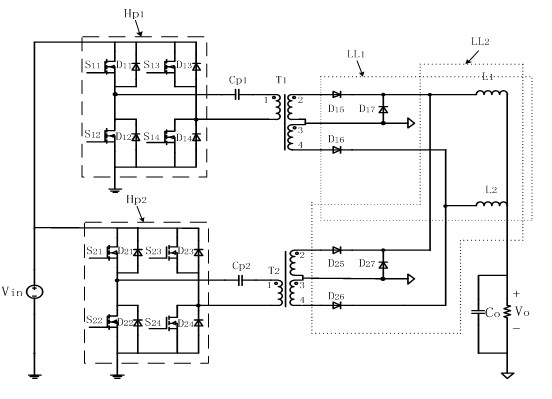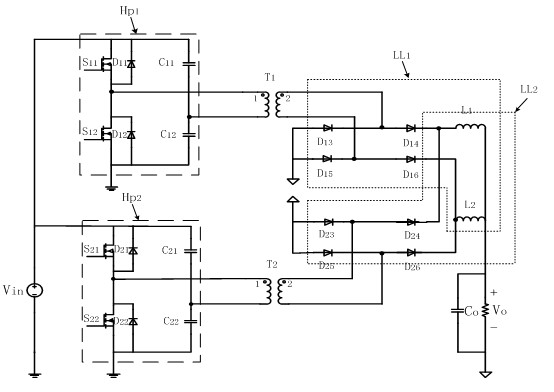Intersected rectification input-parallel and output-parallel combined converter
A converter and parallel technology, which is applied in the conversion devices and instruments for converting DC power input into DC power output and output power, can solve the complex design of the current sharing loop of n converter units and reduce the reliability of combined converters. , the current sharing bus is susceptible to interference and other problems, to achieve the effect of improving power density and reliability, simplifying control, and reducing additional components
- Summary
- Abstract
- Description
- Claims
- Application Information
AI Technical Summary
Problems solved by technology
Method used
Image
Examples
Embodiment approach
[0020] Such as figure 2 As shown, as the second embodiment of the present invention, the main circuit of the combined converter includes a full-bridge module circuit for full-wave cross-rectification on the secondary sides of two sets of transformers. A full bridge circuit Hp1, a DC blocking capacitor Cp1, a high frequency isolation transformer T1 with a center tap on the secondary side, and a full wave rectifier circuit LL1 constitute one of the circuit modules. The full-bridge circuit Hp2, the DC blocking capacitor Cp2, the high-frequency isolation transformer T2 with the center tap of the secondary sideband, and the full-wave rectifier circuit LL2 form another circuit module. Since the internal structures of the two circuit modules are the same, for the convenience of explanation, only the internal structure of one of the circuit modules will be described below.
[0021] The full bridge circuit Hp1 is connected to the primary side of the transformer T1. The switch tubes ...
PUM
 Login to View More
Login to View More Abstract
Description
Claims
Application Information
 Login to View More
Login to View More - Generate Ideas
- Intellectual Property
- Life Sciences
- Materials
- Tech Scout
- Unparalleled Data Quality
- Higher Quality Content
- 60% Fewer Hallucinations
Browse by: Latest US Patents, China's latest patents, Technical Efficacy Thesaurus, Application Domain, Technology Topic, Popular Technical Reports.
© 2025 PatSnap. All rights reserved.Legal|Privacy policy|Modern Slavery Act Transparency Statement|Sitemap|About US| Contact US: help@patsnap.com



